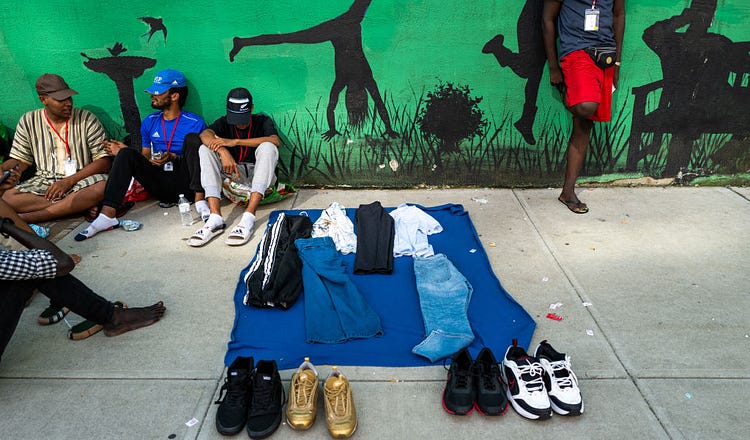‘This Is Not the America I Knew’

Young men sell clothing outside a migrant shelter in Brooklyn on July 21, 2023. (Photo by Spencer Platt via Getty Images)
The recent wave of nearly 130,000 migrants to New York City is angering Hispanic residents—enough to make them consider voting red.
154
NEW YORK CITY — When Marcos Marte arrived in America thirty years ago, he took the first job he could get. Even though he’d graduated with an engineering degree back home in the Dominican Republic, where inflation was reaching double digits, he found himself in a factory line in Long Island, New York. For 16 hours a day, he raced to pull defective steer…
Continue Reading The Free Press
To support our journalism, and unlock all of our investigative stories and provocative commentary about the world as it actually is, subscribe below.
$8.33/month
Billed as $100 yearly
$10/month
Billed as $10 monthly
Already have an account?
Sign In


